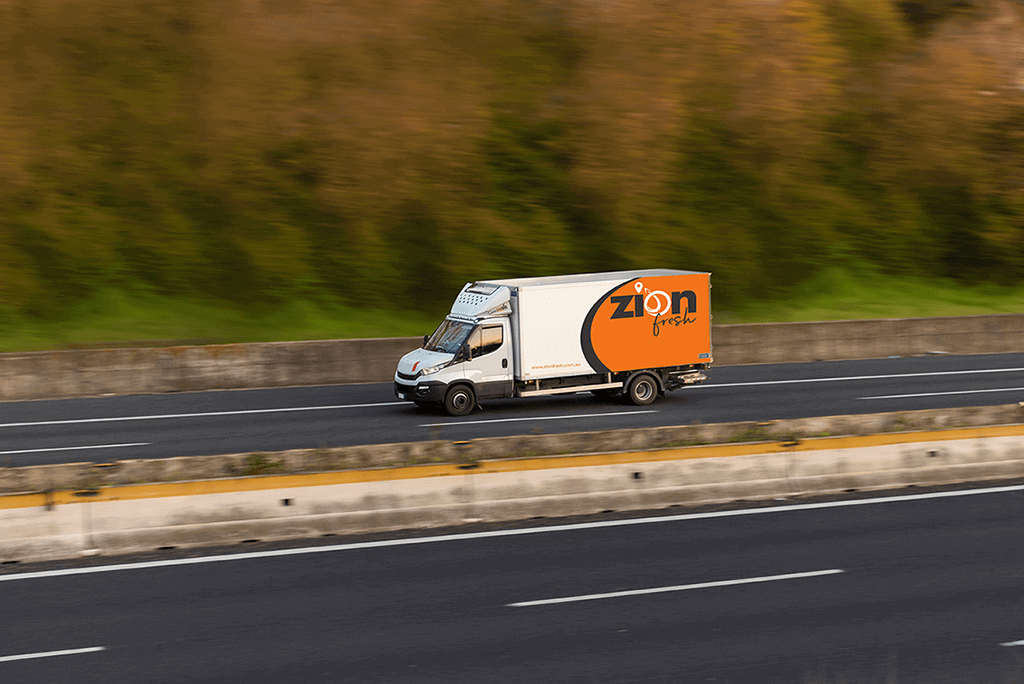Shipping Fresh Produce: All You Need to Know

Along with new customer behaviours and expectations, the notion of 'value' in fresh produce has changed over time. Today, we can witness the rise of extremely strong demand for fresh produce. No wonder the global fresh food market is poised to grow by 420.04 mn tons during 2022 - 2026. And the increased demand for pure and organic food products, focus on healthy eating and lifestyle, and convenience food popularity is some of the major drivers.
However, it's not just about farmers directly delivering to the grocery stores and shoppers buying the fresh produce. The effort the industry requires to make deliveries quickly and safely is much more complicated than you might even think. From temperature, humidity, and shelf life to there are tons of factors that need to take into account while handling the logistics of transporting fresh produce.
Let's explore this in more detail.
Dealing with fresh produce logistics is not without challenges
With long-distance travel, weather issues, sensibilities and perishability, one thing is true there are many challenges in fresh produce logistics.
Perishable foods like tomatoes, cherries, berries, bananas or peaches often start deteriorating with time, resulting in spoilage, growth of bacteria and pathogens, and food loss. That is why, especially in the case of transporting perishable food items, it is necessary to make sure that temperature control is being followed throughout the entire transportation chain. Hence refrigerated courier is being used to keep the product at the right level while being shipped.
From the place of production to the final destination where the harvested produce reaches the consumers, it includes long-distance travel. Another big challenge is shipping fresh produce. This often causes early spoilage in fresh produce or ends up damaging packages. It mostly happens due to the shock and vibration that occurs during transport. In addition, there is plenty of room for loading and unloading hazards, improper capacity planning, and uncertainty that can happen while shipping fresh produce, which can end up bringing financial repercussions.
Temperature control is important
Fresh produce items such as fruits and vegetables should be stored in the needed temperature-controlled conditions during transit. Because even in the finest temperature controlled delivery, this is not a one temperature fits all situation.
Fresh fruit and vegetables require low temperatures, mostly between 32 to 55⁰F and high relative humidity (80 to 95%) to maintain food quality, value and energy. Suppose refrigerated containers are used to transport fruit items like apples, grapes, oranges, strawberries, and sour cherries at 32-36 degrees, whereas the same container may be used to move other fresh produce such as plums, pears or apricots at 30-32 degrees. However, tempering too low can also cause damage.
The following list mentions the storage requirements of some of the fresh produce fruit items. So when transporting fresh fruits, one can maintain the same ideal temperature condition for fruits and veggies.
| Commodity | Temperature (°F) | Rel. humidity (percent) | Approximate storage life | Freezing point (°F) |
|---|---|---|---|---|
| Apples | 30–40 | 90–95 | 1–12 months | 29.3 |
| Strawberries | 32 | 90–95 | 3–7 days | 30.6 |
| Nectarines | 31–32 | 90–95 | 2–4 weeks | 30.4 |
| Pears | 29–31 | 90–95 | 2–7 months | 29.2 |
| Quinces | 31–32 | 90 | 2–3 months | 28.4 |
| Asparagus | 32–35 | 95–100 | 2–3 weeks | 30.9 |
| Broccoli | 32 | 95–100 | 10–14 days | 30.9 |
| Celery | 32 | 98–100 | 2–3 months | 31.1 |
| Mushrooms | 32 | 95 | 3–4 days | 30.4 |
| Spinach | 32 | 95–100 | 10–14 days | 31.5 |
Source: Fruits & Vegetables Storage Conditions
The same goes for vegetables; they differ in temperature level and ideal humidity level. For example, items like carrots, Brussels, broccoli, lettuce, peas, and onion are safe to travel at a temperature of 32 degrees. But it needs the range of 45 to 55 degrees to transport vegetables like eggplant, cucumbers, okra or sweet peppers. So in such a case, it might be a good idea to transport both cabbage and broccoli in the same temperature condition, but keeping carrots and eggplants in the same temperature condition won't work well.
Also, there is a difference between warehouse and cargo containers temperature. And during the loading and unloading of the cargo, condensation can form, causing much deterioration and spoilage of fresh produces. That is why precooling the containers is a must-do before loading fresh food items. So before going for refrigerated delivery services, one should have a clear idea about the rules and regulations of temperature-controlled shipping.
Availability of various modes of transportation for fresh produce
Four modes of transportation are available to ship products from growing regions to marketing or consumption areas: road transport, railway transport, marine transport and air transport.
Road transport is one of the most dominant transport systems, and refrigerated transport is the ideal option. The use of advanced technology ensures the integrity of all products providing temperature controlled environment while in transit. Also, many transportation management systems allow traceability of vehicle movement and same-day delivery service.
Rail transport of fresh produces often considered a sustainable alternative to road transport. Even though it costs less and reduces CO2 emission, due to the slower transportation system and lack of versatility, the usage of rail transport is decreasing. Mostly refrigerated and insulated railway wagons are used for products that require 2-3 days to travel.
The marine transport system is used for long-distance travel. This mode of transportation works well to transport fresh produce in large quantities but at a low cost. However, this is not safe in terms of shipping highly perishable produce unless one uses refrigerated containers.
Air transportation is expensive, but the system works relatively fast and is highly suitable for shipping fresh produce. However, with cargo planes, only a small quantity of produces can be transported.
So considering the type of produces, quantity and geographical area, one needs to choose the best mode of transport to ship fresh produce.
The shelf life of fresh produce
The varying items hold individual shelf life timelines. The shelf life of fresh produce determines how long a certain vegetable or fruit item will remain fresh and safe. It does enable one to ensure better freshness management. For example, you can understand which batch will survive long and which needs to add to the short-haul shipment.
Let's look at the shelf life of some of the common fruits and vegetables.
- Apple- 2 to 3 weeks
- Blueberries 1 to 2 weeks
- Citrus fruits- 2 to 4 weeks
- Avocados- 3 to 4 days
- Pears- 3 to 5 days
- Watermelon- 2 to 3 days
- Peaches- 2-4 days
- Beans- 3 to 6 days
- Tomatoes- 2 to 4 days
Then there are also some fruits and vegetables with a minimum shelf life (just a day or two). And some of those are
- Ripe peaches
- Tart cherries
- Cucumbers
- Strawberries
- lettuce
- Bananas
So eventually, it is the strict shelf life of products that can estimate when the particular fruit or vegetable will reach its end of life. And parameters like colour, firmness, bruising, humidity, temperature or more help to determine it.
Production season
The seasonal produce of places differs depending on growing conditions and weather. So shippers must be aware that they are shipping the array of fruits and vegetables at their peak harvest point. Otherwise, if produce is picked at the wrong time, the transportation chain can be damaged in many ways.
For example, in Australia, spring is the season for fruit and vegetables like avocados, bananas, grapefruits, cherries, lemon, asparagus, beans, carrot, eggplant, broccoli, peas etc. And in summer, you will get some of the same products as in spring, along with some new additions like passionfruit, grapes, peaches, cucumber, capsicum, strawberries, raspberries, lettuce and more. By winter, mandarins, kiwifruit, oranges, radish, turnip, kale, Brussels sprouts, carrots, and cauliflower becomes available.
So to fulfil daily orders of fresh produce for supermarkets or restaurant delivery in Melbourne, looking at the season, one can definitely take advantage of the abundance of produce while shipping fresh produce.
In summary
Today, the demand for fresh produce is at its ultimate peak. And due to the evolving customer demands, high competition and technological advancement, retailers are required to make serious steps when it comes to dealing with the fresh produce sector. As produce is a sensitive freight, fulfilling all the post-harvest stages and requirements of the produce till it reaches the consumer's hand is a must-do. And the stages consist of controlling temperature, considering shelf life and seasonality of produce, choosing cold chain logistics in Melbourne and focusing on the challenges.



